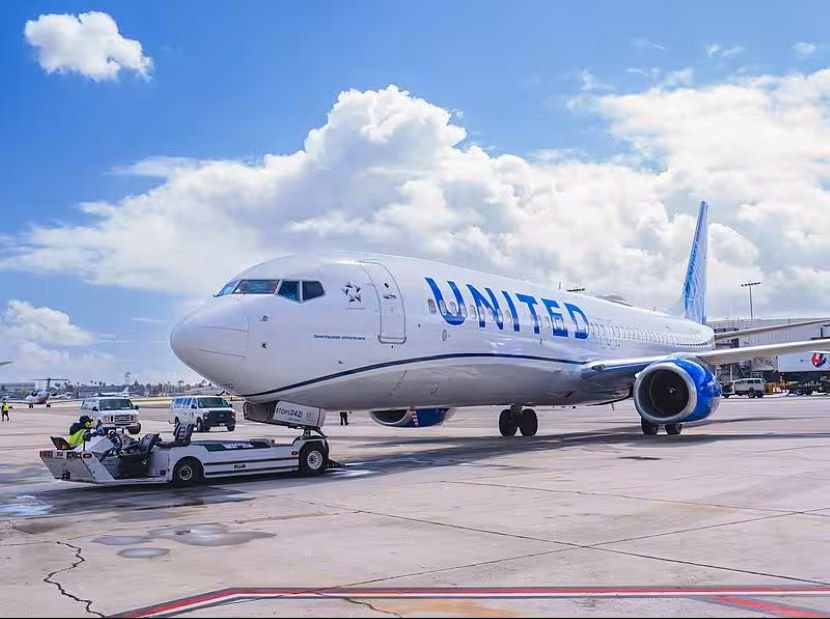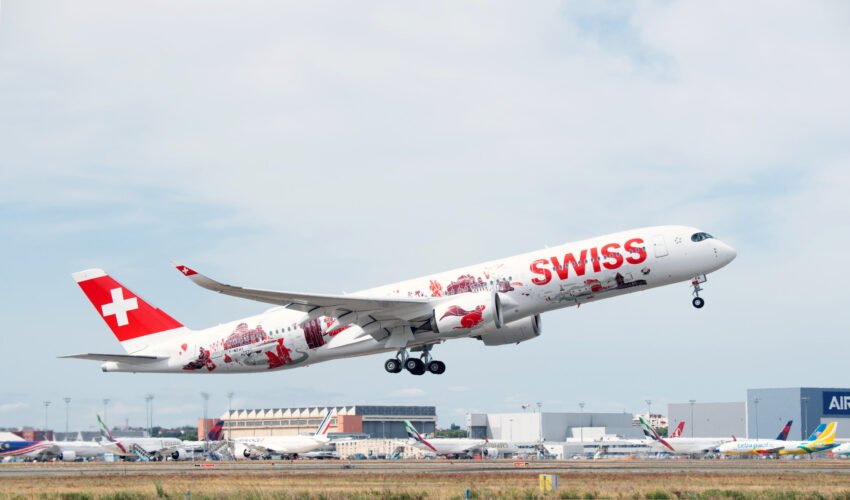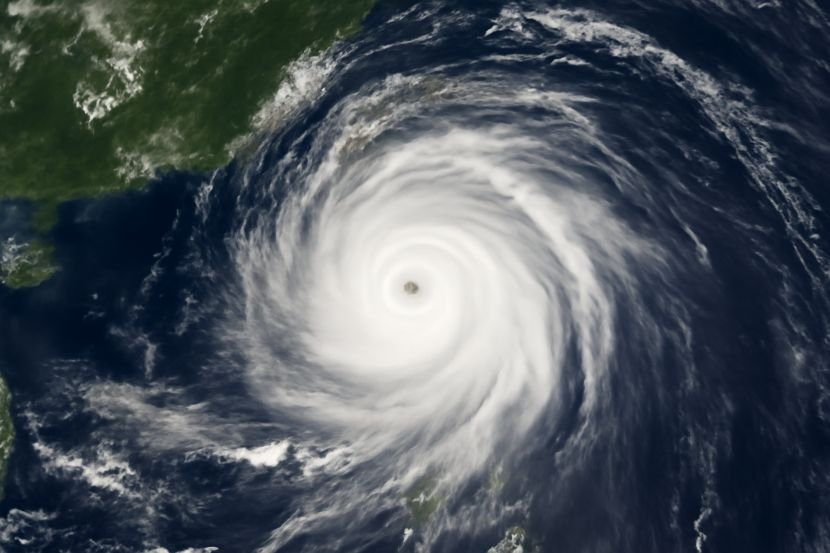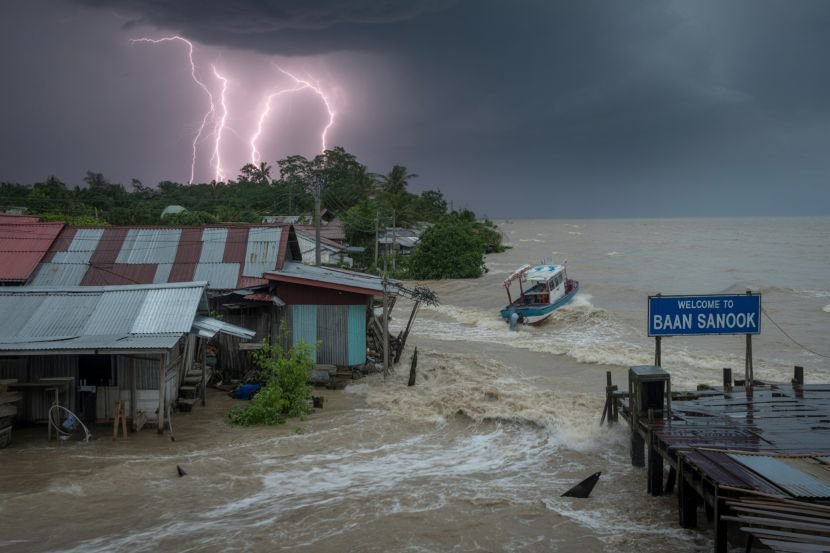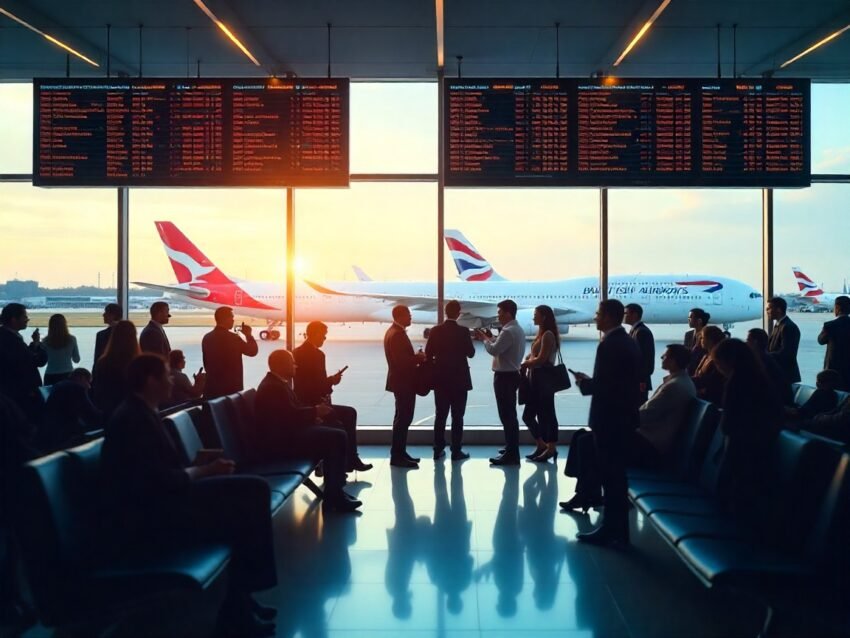Home
»
AIRLINE NEWS
»
Hong Kong Airlines Relocate Eighty Percent of Aircraft Amid Typhoon Ragasa’s Devastation, Disrupting Travel Across Southern China
Published on
September 26, 2025

As Typhoon Ragasa intensifies, Hong Kong Airlines have relocated eighty percent of their aircraft to safer locations, aiming to protect their fleets from the severe weather. This move comes as the powerful storm, the most intense of the year, disrupts travel across southern China. With Hong Kong bracing for its impact, the city’s major airlines, including Cathay Pacific and Greater Bay Airlines, have taken proactive steps to mitigate potential damage. Typhoon Ragasa is expected to bring strong winds and heavy rain, prompting the relocation of aircraft to airports in neighboring countries, such as Japan and mainland China.
The disruption in travel has left many passengers stranded as Hong Kong International Airport shuts down temporarily. Airlines are working hard to provide updates and alternative options to affected travelers. As the storm moves across the region, the focus remains on restoring operations once it clears.
Hong Kong Airlines’ Response to Typhoon Ragasa
In preparation for the impending storm, Hong Kong’s major airlines have been forced to make critical decisions to safeguard their fleets. According to multiple reports, the aircraft were moved earlier this week to various international airports. This preemptive action ensures that the airlines will be able to resume normal operations swiftly once Typhoon Ragasa has moved on.
Hong Kong International Airport (HKIA), one of the busiest airports in the world, is currently closed as the typhoon progresses through the region. This shutdown has led to cancellations of both incoming and outgoing flights, causing significant disruption for travelers in and out of the region. Although the closure of HKIA has halted operations for the time being, the airlines’ proactive measures are expected to minimize the long-term impact.
The Impact of Typhoon Ragasa
Typhoon Ragasa is making its way westward across Hong Kong and Guangdong Province. The storm has already wreaked havoc in the Philippines and Taiwan, causing extensive flooding, landslides, and damage to infrastructure. This typhoon is expected to continue its course through Guangdong and Guangxi provinces before eventually dissipating over northern Vietnam.
Hong Kong’s weather experts have issued a Signal No. 10 hurricane warning, the most severe level on the region’s scale. The Signal No. 10 warning indicates that Typhoon Ragasa is packing winds of over 150 km/h, with gusts reaching hurricane-force levels. The storm has also triggered heavy rainfall, increasing the risk of flash floods and further complicating efforts to manage the ongoing crisis.
Aviation Disruptions in Hong Kong and Beyond:
The immediate impact on aviation has been severe, with numerous flight cancellations affecting travelers. Hong Kong International Airport, already facing significant passenger traffic, has been forced to suspend flights to avoid the risks posed by the high winds and unpredictable weather conditions. The airlines’ quick relocation of their fleets has been a vital step in maintaining some level of flight continuity.
In addition to the aircraft relocations, airlines have announced that they will be closely monitoring the situation and adjusting their schedules once the typhoon passes. While Hong Kong’s airport remains shut, flight operations are expected to resume as soon as the typhoon clears, allowing the airlines to return their aircraft from their temporary stations across the region and internationally.
Relocation Strategy and Passenger Concerns
The decision to move approximately 80% of Hong Kong’s aircraft out of the region was made in response to the unprecedented power of Typhoon Ragasa. The airlines involved have emphasized the importance of prioritizing passenger and aircraft safety, particularly in such a volatile weather event. According to a report from Reuters, the aircraft are being relocated not just to avoid damage but also to facilitate their return to service once the storm has subsided.
However, the relocation strategy has not come without challenges for passengers. Many travelers have faced disruptions in their flight schedules, with some experiencing long delays or complete cancellations of their flights. Hong Kong’s airlines are working diligently to accommodate affected passengers, providing alternative flights and issuing travel advisories to ensure that travelers are kept informed of their options.
Global Implications of Typhoon Ragasa’s Impact
Typhoon Ragasa’s effects are not confined to Hong Kong and southern China. The storm’s impact has rippled across the region, disrupting not only air travel but also other forms of transportation. Airports in neighboring regions, including Taiwan and parts of Japan, have been on high alert, with some flight routes affected due to the typhoon’s proximity.
The storm’s influence extends beyond the aviation industry, as the heavy rain and high winds have led to power outages, road closures, and challenges for residents in the affected regions. This widespread disruption underscores the significant impact that natural disasters can have on international travel, business operations, and local economies.
Looking Ahead
As Typhoon Ragasa continues its westward journey, both local authorities and airlines are focused on ensuring that recovery operations are swift and efficient. While the damage caused by the typhoon is still being assessed, Hong Kong’s airlines have shown remarkable resilience in ensuring that their fleets are protected and that they can return to full operation as soon as it is safe to do so.
Travelers who were affected by cancellations and delays have been urged to check with their respective airlines for the latest updates and rescheduling options. Despite the ongoing challenges, the resilience of the aviation industry in Hong Kong, and across the region, will play a crucial role in restoring normal operations in the coming days.
Source: Airline Geeks




